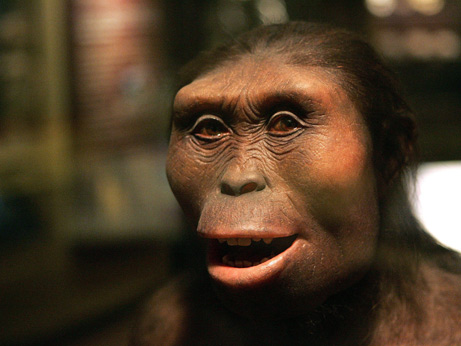Central African chimpanzees crave honey so much that they've invented the animal kingdom's most complex known set of tools to get it, according to researchers who found many of the tools still slathered with the syrupy liquid.
A new study on the findings, accepted for publication in the Journal of Human Evolution, is believed to be the first to compare such a sophisticated chimp tool set with Stone Age human technologies. Hunger for honey appears to have motivated both species.
"Tools are used to solve ecological challenges," lead author Christophe Boesch explained to Discovery News. "The more complex and rewarding a challenge is, the more complex the solutions are going to be."
Boesch, who is the director of the Department of Primatology at the Max Planck Institute for Evolutionary Anthropology, added that Central African tropical forests are full of bees and their honey, so "humans and chimpanzees living in such an environment would face similar challenges and, with both having extended learning abilities, would rely upon tools to overcome the challenges."
For this latest study, however, Boesch and colleagues Josephine Head and Martha Robbins observed chimpanzees at Loango National Park on the coast of Gabon, Africa. They identified at least five different types of chimp-made honey extraction tools used in sequence.
The tools consist of pounders, enlargers, collectors, perforators and swabbers. Chimps, suspended in acrobatic positions on branches, might first pull out a thick stick pounder to break open beehive entrances. They then reach for another stick, the enlarger, to perforate and widen different honeybee hive compartments. Next comes the collector, used to dip or scoop out honey.
Different tools and methods are needed to obtain underground bee honey. The chimps wield a perforator to penetrate the ground, locate a honey chamber and dig into the soil. They then pull off strips of bark to "dip and spoon the honey out of the opened beehive."
Obtaining honey from an underground hive isn't easy. Aside from dealing with angry, stinging bees, the chimps must dig narrow sideways tunnels, maintain perfect aim and prevent soil from falling into, and ruining, their desired sweet reward.
Boesch and his team believe the chimps must therefore possess "an elaborate understanding of unseen nest structure, combined with a clear appreciation that tools permit the location of unseen resources, and a precise three-dimensional use of geometry for reaching the honey chamber from the correct angle."
via Chimp-made toolkit most complex ever found - Discovery.com- msnbc.com.
What is amazing to me is that anyone could look at chimps and humans and not realize that we have a common ancestor.
 Please stop saying that we "did not evolve from monkeys". Evolutionists do not say we evolved from monkeys!
Please stop saying that we "did not evolve from monkeys". Evolutionists do not say we evolved from monkeys!Evolution says that both we and monkeys evolved from a common ancestor, something different from either of us, something like the 12 million year old Anoiapithecus, or kenyapithecines which were neither human nor monkey.
If the world could see a living family of Australopithecus afarensis I think the truth would be instantly obvious and, frankly, I think creationist religions would crumble. Perhaps religious people's brains would just short circuit and their heads would spin around. I imagine many would have to look in the mirror and say, "Holy Bejeezuz! I was so wrong, but I thought I was so right! I've been a close minded moron! Evolution is true!"
Lucy is real, but what you get is a bunch of religious deniers (eg. here, here, here) who say Lucy is not the missing link... and then they make up some "reason"to keep their heads from exploding. (Too much of the skull is missing!! The knee bones were discovered a year earlier and 1.5 miles from the rest of the skeleton!! They put it together wrong!!, etc.)
Well, Lucy is not the only A. afarensis. Deniers ignore Salem and other A. afarensis finds.
The recovered skeleton of a 3-year-old A. afarensis girl comprises almost the entire skull and torso, and most parts of the limbs. The features of the skeleton suggest adaptation to walking upright (bipedalism) as well as tree-climbing, features that match the skeletal features of Lucy and fall midway between human and humanoid ape anatomy. "Baby Lucy" has officially been named "Selam" (meaning peace in most Ethiopian languages) - wiki
Actually there was at least one other different species that lived at the same time as Lucy and either one or both may have been our ancestors. 
What about Neanderthal man?! Very different from us. We have hundreds of Neanderthal bones, many different skeletons, we even have DNA! They looked much more like us than apes, but with ape like features.
And what about Homo erectus? And what about Homo ergaster? And Homo heidelbergensis? and so on..
Deal with it. Face reality. Accept the physical evidence! Evolution is a fact.
Once you understand this, it is not suprising at all that modern chimps have abilities similar to ours.

No comments:
Post a Comment